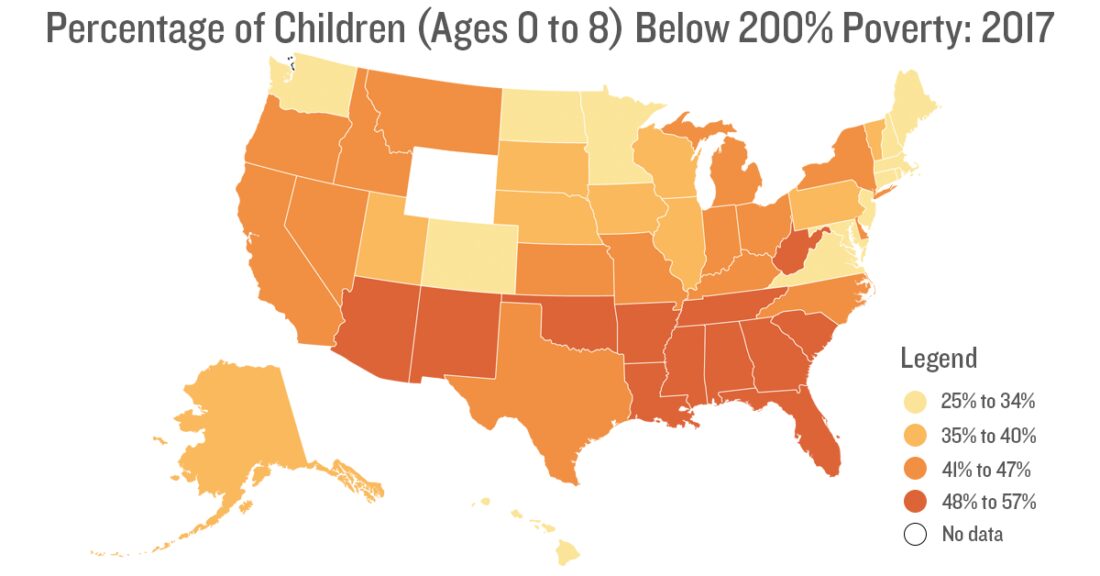Shrinking Share of Young Kids Living in Economic Distress in 2017

The percentage of young children living below 200% of the federal poverty level continues to shrink across the nation. In 2017, 42% of children, ages 0 to 8, lived in such settings, according to newly available data. This statistic is down from 44% in 2016 and 48% in 2012.
In the last five years, the total number of young children living below 200% poverty has also fallen: 14,758,000 kids met this threshold in 2017 — down nearly 2.5 million children from 2012.
The likelihood that young children are living at this level of economic distress varies widely from state to state. Rates in 2017 ranged from a low of 25% in New Hampshire to a high of 57% in New Mexico. In three states — Alabama (49% to 51%), Delaware (41% to 42%) and Louisiana (51% to 53%) — the likelihood of kids living below 200% poverty grew from 2016 to 2017.
In Puerto Rico, low-income rates for young children have historically run far higher: In 2017, 83% of the island’s kids lived below 200% poverty. This statistic is down from 85% in 2016.
Economic success and stability can help children grow up healthy and thrive. At the same time, children living amid economic stress and hardship can experience negative physical, emotional and mental repercussions that can hinder their development and academic success.






